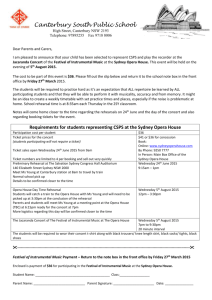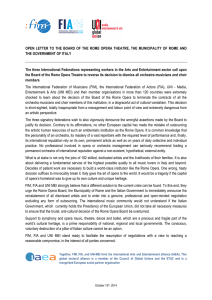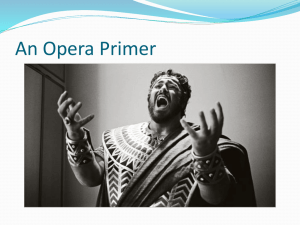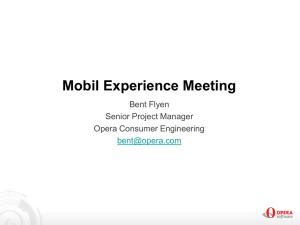SYDNEY OPERA HOUSE
advertisement
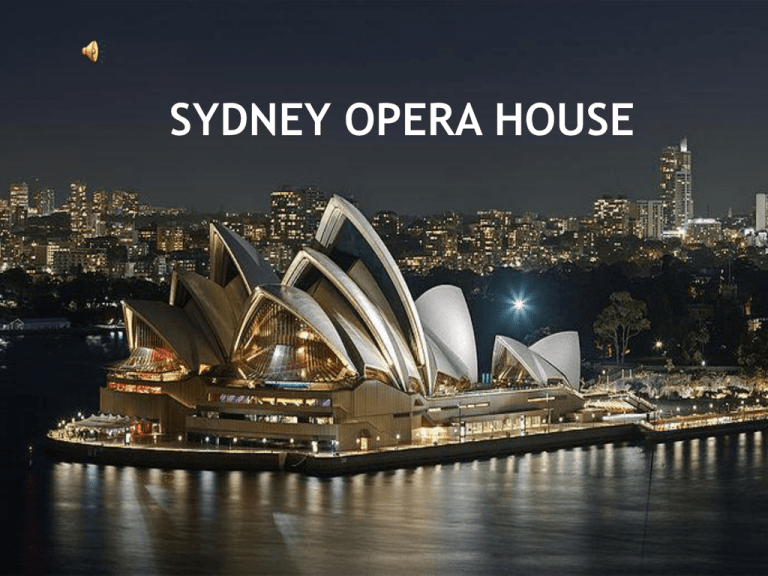
BUILD BY WHO: It was conceived and built by Danish architect Jοrn Utzon. It is one of the most famous buildings of the 20th century. It is also one of the most popular visitor attractions in Australia, with more than seven million people visiting the site every year. The building houses multiple performance venues and it hosts over 1,500 performances each year attended by about 1.2 million people. ITS LOCATION: It is in Sydney, New South Wales, in Australia and is located at Bennelong point in Sydney port and near the famous Sydney Bridge. The Sydney Opera House is a modern expressionist design, with a series of large precast concrete "shells", each composed of sections of a sphere of 75.2 metre (246 ft) radius, forming the roofs of the structure, set on a monumental podium. The building covers 1.8 hectares (4.5 acres) of land and is 183 metres (605 ft) long and 120 metres (388 ft) wide at its widest point. It is supported on 588 concrete piers sunk as much as 25 metres below sea level. The power supply is equivalent for a town of 25,000 people and distributed by 645 kilometers of electrical cable. The roofs are covered with 1.056 billion Swedish glazed tiles mineral creamy-white, though from a distance the tiles look only white. The theater's opera and concert hall are the two largest groups of shells and other theaters are on the sides of the shell groupings. The interior of the building consists of pink granite. The Sydney Opera House contains five theaters, five rehearsal studios, two main halls, four restaurants, six bars and numerous souvenir shops. The five theaters are the facilities: * The Concert Hall Concert Hall, with 2,679 seats, * The Opera Theatre Opera Theatre, with 1,547 seats, is the main performance space for Opera Australia, also used by the Australian Ballet Australian Ballet Company. * Theatre Drama Theatre, with 544 seats * Theatre Playhouse, with 398 seats * The Theatre Studio Theatre, with 364 seats Except from theatrical productions, facilities are also used for events such as weddings, parties and conferences. Origins: Planning for the Sydney Opera House began in the late 1940s, when Eugene Goossens, lobbied for a suitable venue for large theatrical productions. Stage I commenced on 2 March 1959, monitored by the engineers and partners. However, Utzon had still not completed the final designs. Major structural issues still remained unresolved. By 23 January 1961, work was running 47 weeks behind, because of unexpected difficulties. Work on the podium was finally completed in February 1963. The forced early start led to significant later problems, not least of which was the fact that the podium columns were not strong enough to support the roof structure, and had to be re-built. From 1957 to 1963, the design team went through at least twelve alterations of the form of the shells trying to find an economically acceptable form before a workable solution was completed. In mid-1961, the design team found a solution to the problem: the shells all being created as sections from a sphere. This solution allows arches of varying length to be cast in a common mould, and a number of arch segments of common length to be placed adjacent to one another, to form a spherical section. The cost of the project so far was still only $22.9 million less than a quarter of the final $102 million cost. The second stage of construction was progressing toward completion when Utzon resigned. His position was principally taken over by Peter Hall, who became largely responsible for the interior design. The Opera House was formally completed in 1973, having cost $102 million. Stage I:podium approximately $5.5m. Stage II: roof shells approximately $12.5m. Stage III: completion The Hornibrook Group $56.5m. Separate contracts: stage equipment, stage lighting and organ $9.0m. Fees and other costs $16.5m. The original cost estimate in 1957 was £3,500,000 ($7 million). The original completion date set by the government was 26 January 1963 (Australia Day). The project was completed ten years late and over-budget by more than fourteen times. The Opera House was formally opened by Elizabeth II, Queen of Australia, on 20 October 1973, with a large crowd in attendance. The architect, Jorn Utzon, was not invited to the ceremony, nor was his name mentioned. The opening was televised and included fireworks and a performance of Beethoven's Symphony. Beginning in the late 1990s, the Sydney Opera House Trust began to communicate with Jorn Utzon in an attempt to effect a reconciliation and to secure his involvement in future changes to the building. In 1999, he was appointed by the Trust as a design consultant for future work. In 2004, the first interior space rebuilt to an Utzon design was opened, and renamed "The Utzon Room" in his honour. In April 2007, he proposed a major reconstruction of the Opera Theatre. Utzon died on 29 November 2008. A state memorial service, attended by Utzon's son Jan and daughter Lin, celebrating the creative genius of Jorn Utzon was held in the Sydney Opera House Concert Hall on 25 March 2009 featuring performances, readings and recollections from prominent figures in the Australian performing arts scene. On Tuesday 17 November 2009, Sydney Opera House officially opened the refurbished Western Foyers and Accessibility improvements, the largest building project completed since Jorn Utzon was re-engaged in 1999. Designed by Utzon and his son Jan, in collaboration with Richard Johnson of Johnson Pilton Walker, the project has transformed the Western Foyers into a stylish and functional space providing patrons with additional amenities including new ticketing, toilet and cloaking facilities. Importantly, new escalators and a public lift have vastly improved access for less mobile visitors, people with a disability and families with prams. I chose the Sidney Opera House because I think is a very beautiful building and an amazing place which is used for a lot of types of entertainment, like opera, theatre and others. Finally, it is something very special. http://el.wikipedia.org/wiki/Όπερα_του_Σiδνεϋ http://en.wikipedia.org/wiki/Sydney_Opera_House Chrystalla Kekkou B'1

